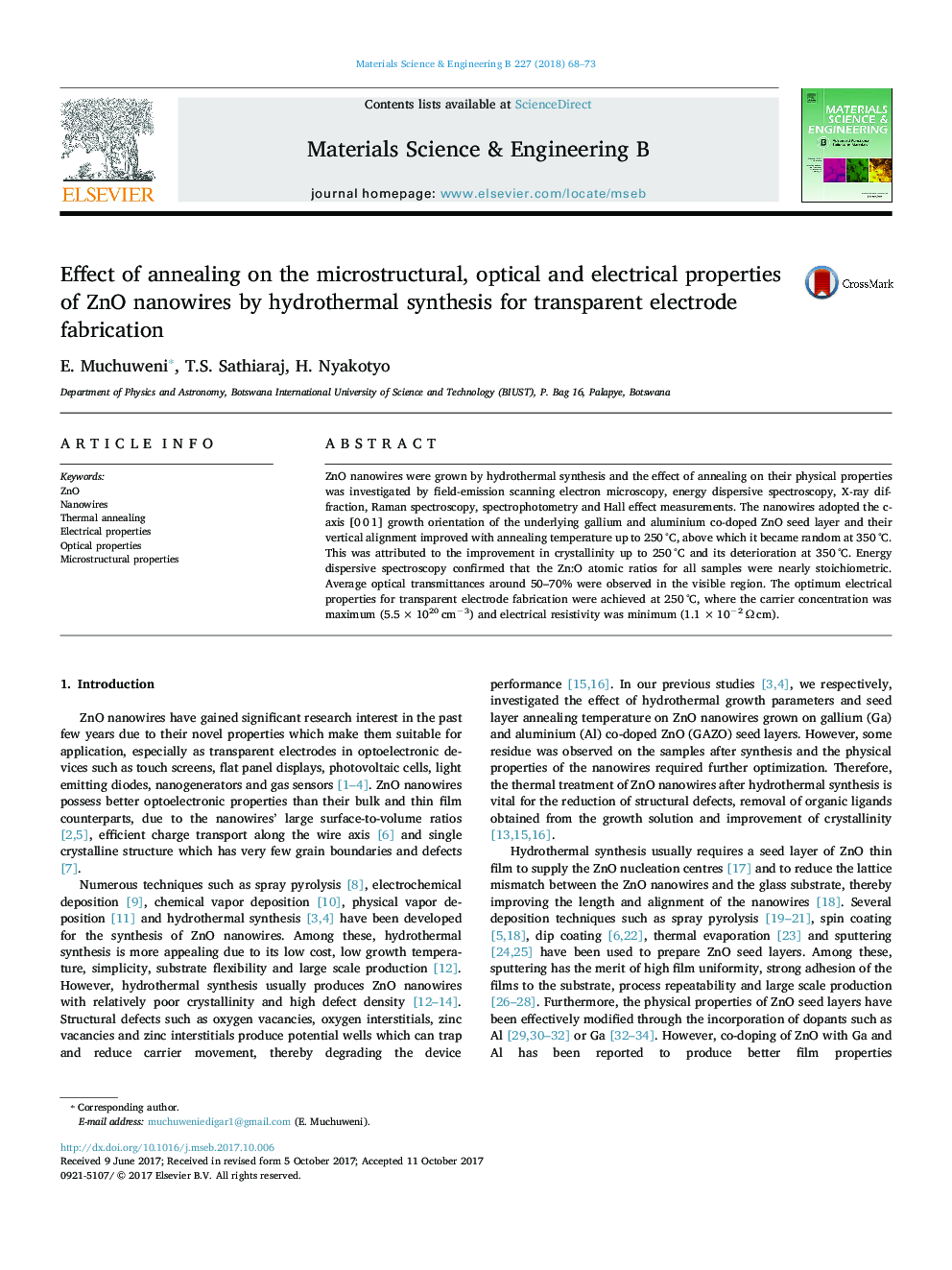| Article ID | Journal | Published Year | Pages | File Type |
|---|---|---|---|---|
| 5448624 | Materials Science and Engineering: B | 2018 | 6 Pages |
Abstract
ZnO nanowires were grown by hydrothermal synthesis and the effect of annealing on their physical properties was investigated by field-emission scanning electron microscopy, energy dispersive spectroscopy, X-ray diffraction, Raman spectroscopy, spectrophotometry and Hall effect measurements. The nanowires adopted the c-axis [0â¯0â¯1] growth orientation of the underlying gallium and aluminium co-doped ZnO seed layer and their vertical alignment improved with annealing temperature up to 250â¯Â°C, above which it became random at 350â¯Â°C. This was attributed to the improvement in crystallinity up to 250â¯Â°C and its deterioration at 350â¯Â°C. Energy dispersive spectroscopy confirmed that the Zn:O atomic ratios for all samples were nearly stoichiometric. Average optical transmittances around 50-70% were observed in the visible region. The optimum electrical properties for transparent electrode fabrication were achieved at 250â¯Â°C, where the carrier concentration was maximum (5.5â¯Ãâ¯1020â¯cmâ3) and electrical resistivity was minimum (1.1â¯Ãâ¯10â2â¯Î©â¯cm).
Keywords
Related Topics
Physical Sciences and Engineering
Materials Science
Electronic, Optical and Magnetic Materials
Authors
E. Muchuweni, T.S. Sathiaraj, H. Nyakotyo,
